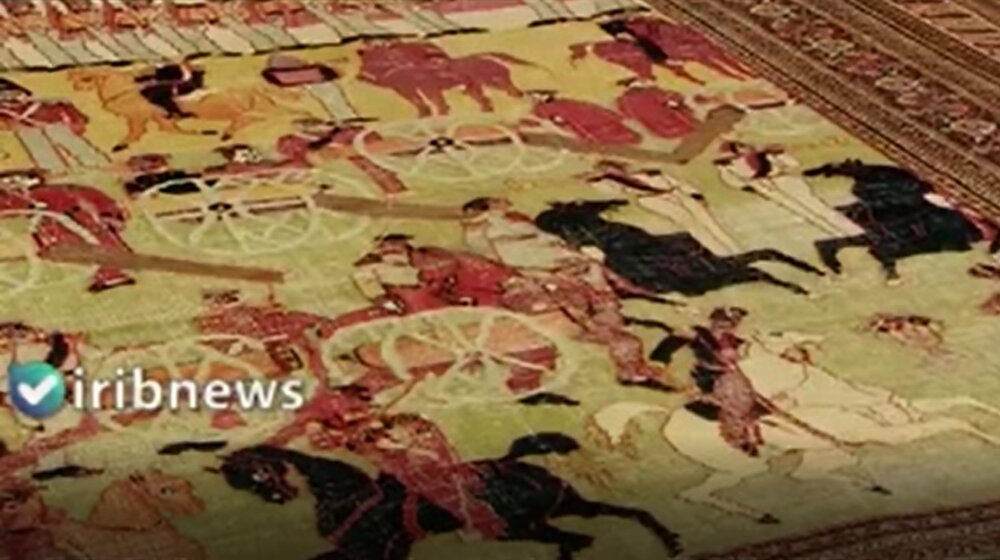‘World’s biggest’ pictorial carpet pops up in Tehran

TEHRAN – A massive handwoven carpet, which according to a senior Iranian expert is ‘the biggest and oldest pictorial carpet in the world’ has recently been unveiled in the UNESCO-registered Golestan Palace in downtown Tehran.
“This pictorial carpet, which dates back over a century, came to light some three years ago during a survey held at the historical-carpet treasure trove of the World Heritage site,” said Touraj Jouleh, who is a senior cultural heritage expert at the Ministry of Cultural Heritage, Tourism and Handicrafts.
“Measuring 5 by 5.75 meters, the pictorial carpet covers 28 square meters in area and it is assumed that the carpet is made in the south of Khorasan region somewhere near Birjand,” he said.
“After a range of studies, with the cooperation of experts from Birjand Cultural Heritage Department, was carried out on hand-woven pictorial carpets of the world, it was determined that this carpet is the largest pictorial carpet in the history of carpet weaving in the globe.”
Talking about the theme the carpet depicts, he noted: “A month-long survey suggests that the carpet depicts a location which is not Iranian soil, and it may be somewhere in Afghanistan or India.”
“On this carpet, the image of a parade or military maneuver of British soldiers in front of a luxurious headquarters and residence is depicted.”
“The carpet bears social/political theme, and at the upper part of the carpet, it seems an image of a ship in the Persian Gulf is woven,” Jouleh added.
The expert, however, expressed surprise over the bizarre depiction, saying “The reason why such an event has been woven is unknown, and the event itself is still unidentified as well and we hope it to be deciphered in future surveys.”
Handwoven Persian carpets are sought after internationally for their delicate designs and good quality. A medallion pattern is arguably the most characteristic feature of all types of Persian rugs. Among Persian carpets, particularly those of the classic period, the medallion may represent an open lotus blossom with several petals.
Golestan Palace became a center of Qajari arts and architecture which is an outstanding example and has remained a source of inspiration for Iranian artists and architects to this day. It embodies a successful integration of earlier Persian crafts and architecture with Western influences.
AFM/MG
